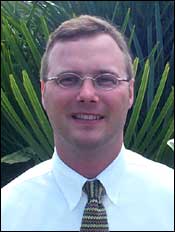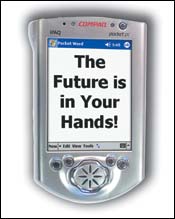
As clinicians we must truly consider the value of our time-what is becoming more efficient worth to us? What if you could have one more hour of direct patient care per day given back to you? What if you covered yourself so well with thorough clinical documentation that you never had to worry about Medicare audits? What if you had a master control panel that allowed you to monitor every clinical process occurring in your practice with the click of a button? What if I told you that you will see this happen not far in the future?
The Time Is Now
No matter how big or how small your practice is, the time to start changing is now! The argument that you run a small practice and can’t afford technology isn’t acceptable-smaller practices cannot afford to run without it! The smaller practice actually has a significant advantage because small-scale changes can be implemented without significant capital expenditures, without massive training efforts, and without the logistical nightmares that a large multi-office facility faces. Technology offers the small practice and the large practice alike an opportunity to become more efficient.
Start by finding one piece of software to help automate a part of your practice-expect to change the way you do it again in a year or two, or even in a few months. Expect to become more proficient with computers as you do so. Expect to start thinking about and finding new and more efficient ways to do the things that you are doing today. You will be amazed at how quickly your computer abilities grow and how quickly you realize there is no way that you could ever go back to doing things the way you did before the introduction of information technology.
O&P: A Unique Profession
We share some headaches with other medical professions, such as the need for Medicare-required documentation, patient scheduling, scheduling with multiple practitioners at multiple offices and locations, billing issues, reimbursement issues, and cash flow issues. Orthotics and prosthetics is a unique profession. However, the challenges we face with the manufacturing/fabrication component of our practice introduces an entirely new level of complexity. I’m sure everyone is familiar with the “joys” of tracking fabrication projects, managing stock and inventory, ordering components, and timing and coordinating all of the processes involved. If only some of our allied health colleagues could see the juggling that occurs every day in the typical O&P practice.
The positive side of this additional complexity is that we have more opportunities to save time by increasing efficiency than probably any other health care profession. We need to look at each issue and find solutions to eliminate wasted time in our practices. Evaluating the office, we can start to examine administration, scheduling, billing, compliance tracking, and accounting. On the clinical side, we can evaluate how we perform documentation, fabrication, ordering of components, work tracking, central fabrication, sharing information with the patient’s health care team, research, professional communication, outcomes monitoring, and every other event that occurs when we are not involved in direct patient contact.
In order for O&P practices to continue to exist as viable businesses in today’s competitive marketplace, we must increase our efficiency. There has never been a time in the history of O&P when practices have been as overwhelmed with the need to generate volumes of paperwork and work with the number of patients we do today in order to be both compliant and profitable. We work harder and longer, and we spend less time with patients and more time performing administrative and documentation tasks. The battle cry of the 21st century practitioner must be “Automation! Automation! Automation! ”
Tools and processes must be put into place to allow practitioners to spend more time with patients and less time on the phone, less time filling out paperwork, less time explaining fabrication details to our technical staff, less time trying to track down work in progress, less time answering questions, and definitely less time creating more documentation to justify work that we already did.
Technology: Key to Efficiency
There are many everyday processes that can be made more efficient. How do we fix what we are doing if we cannot measure what we are doing? Does becoming more efficient require creating more forms to complete and track? How about another policy meeting where we implement the routing slip of the month?
These old ways must be left in the past. We must decide to be fast! An evolution of business is occurring in which anything that can be automated not only will be automated, but must be automated. This is being evidenced in every industry, from auto repair-where all Chilton’s manuals are online, all parts are ordered online, allowing ASE-certified mechanics to spend more time working on vehicles-to hospital-based medicine, where complete medical records are accessible online, x-rays from across town can be viewed in minutes online by other physicians, and prescriptions are automatically wired to a pharmacy closest to the patient’s home.
 |
| IPAQ |
There is a vital way for us, as practitioners, to become more efficient, and that is to integrate technology into our practices. This requires computers, software, and Internet access. It’s time to bring 21st century tools into the hands of every practitioner in every O&P office. There is no time to be a “do it yourselfer.” If necessary, hire a professional to help computerize your office.
What’s Ahead?
We will begin to see a streamlining of clinical practice with software tools that automate many of the things we do each day. There will be a constant evolution, so don’t write off technology if you have a single bad experience. Revisions and new tools come faster than anticipated. We will begin to see many of the unfolding fragments start to gel, and each of us will find unique ways to piece different tools together to create a seamless electronic process. Any paper-based steps will begin to feel archaic, and the demand for filling in these gaps in technology will drive the creation of better tools to meet your needs.
We will begin to see more manufacturing and central fabrication companies going beyond static websites and venturing into providing more value-added tools and resources through the Internet. Complete documentation online, responsive and accessible customer service, job tracking, and E-commerce sites that allow practitioners to order products, track shipments, view technical information, create additional documentation-and more-are some of the things that we will see in this decade! O&P may be a small industry, but we are not at all immune to the changes that are taking place in the global marketplace. With the demands that are being placed upon us as practitioners, we cannot afford to continue working in the 20th century for much longer.
If we are going to maintain viable practices, technology and change are not going to be optional parts of our future. It is not advisable to even start a practice without having it pre-wired for a basic network, and connected to the Internet with DSL or a cable modem. Both office staff and clinical staff must have access to Internet-enabled computers in order to be equipped with the tools necessary to compete in today’s world.
We need to consider where we want to be in five years: look around-the writing is on the wall. Challenge yourself to become more aware of technology over the next month in everything that you do.
At the recent Annual Academy Meeting, a lot of people both described to me and showed me some unique applications that they are using in their offices to increase efficiency. Many O&P professionals are using hand-held devices such as Palm Pilots and Pocket PCs, integrating digital images and digital video into their patient records, and communicating more with their referral sources through the Internet. If you are doing something that makes your practice more efficient through technology, I’d love to hear about what you’re doing. As a profession, we need to continually share these ideas and encourage global advancements for everyone. Please contact me via e-mail:
[email protected]
.
Paul E. Prusakowski, CPO, is president of O&P Digital Technologies and owner of an independent clinical practice in Gainesville, Florida.




